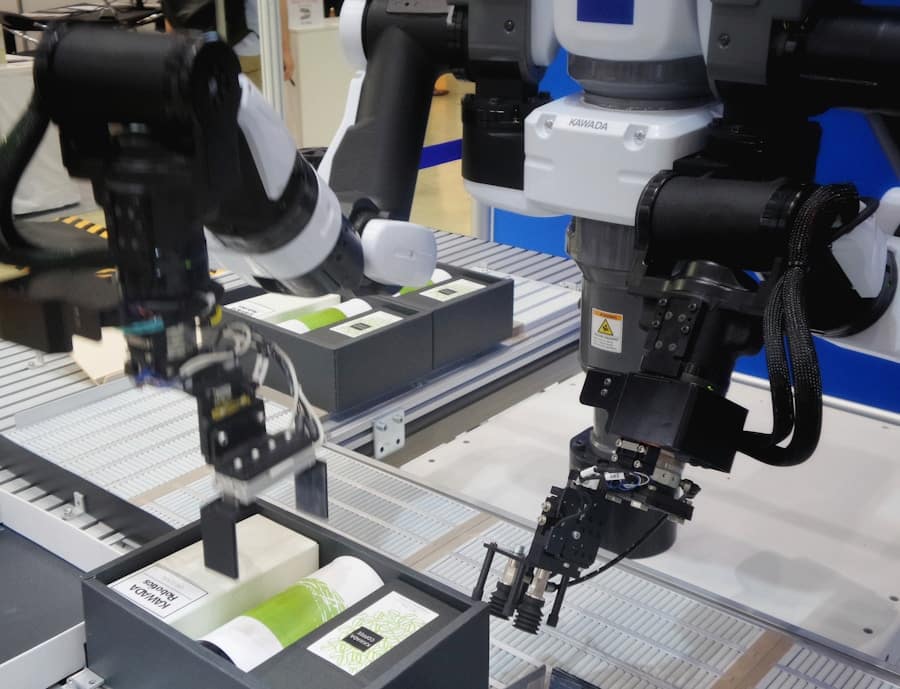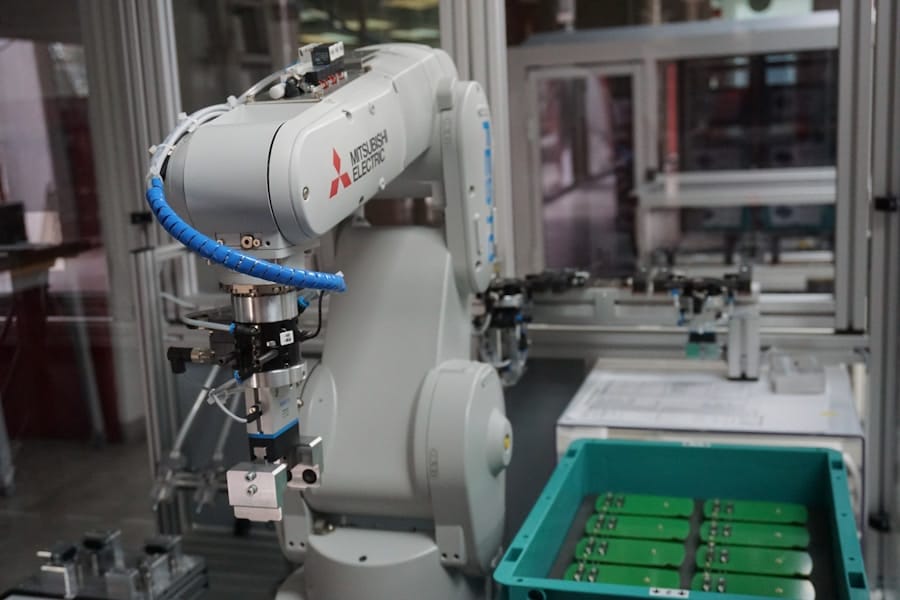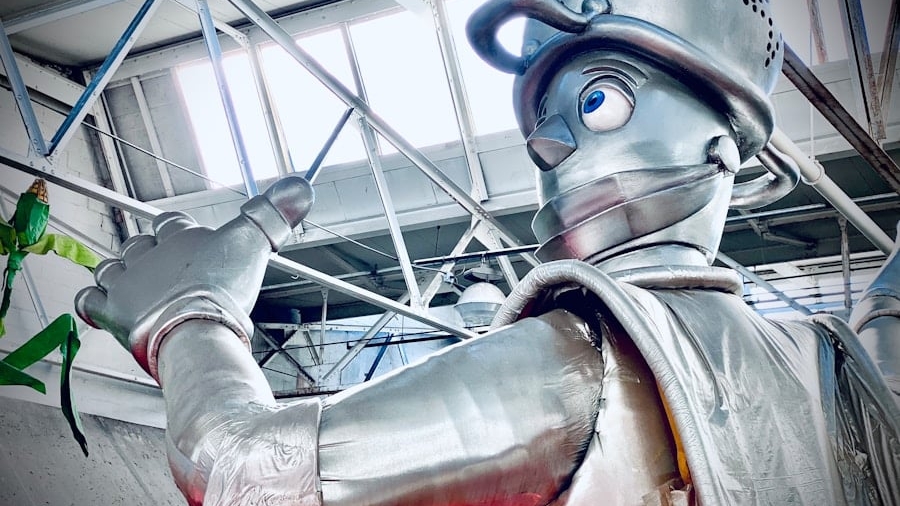The manufacturing sector is undergoing a transformative shift, driven by the integration of Artificial Intelligence (AI) and the Internet of Things (IoT). These technologies are not merely enhancements; they represent a paradigm shift in how manufacturing processes are conceived, executed, and optimized. AI, with its ability to analyze vast amounts of data and learn from it, complements IoT, which connects devices and systems to facilitate real-time data exchange.
Together, they create a smart manufacturing ecosystem that enhances efficiency, reduces waste, and fosters innovation. As industries strive for greater productivity and sustainability, the convergence of AI and IoT is becoming increasingly vital. Smart factories equipped with these technologies can monitor equipment health, predict maintenance needs, and optimize supply chains in real-time.
This synergy not only streamlines operations but also enables manufacturers to respond swiftly to market demands and consumer preferences. The implications of this technological evolution extend beyond operational efficiency; they also encompass environmental sustainability, as smarter manufacturing processes can lead to reduced resource consumption and lower emissions.
Key Takeaways
- AI and IoT are revolutionizing the manufacturing industry by enabling smart and efficient processes.
- AI plays a crucial role in smart manufacturing by optimizing production, predicting maintenance needs, and improving quality control.
- IoT enhances smart manufacturing by connecting machines, devices, and sensors to gather and analyze real-time data for better decision-making.
- Smart eco-friendly manufacturing facilities benefit from reduced energy consumption, waste reduction, and improved sustainability.
- Successful case studies demonstrate the positive impact of AI and IoT in manufacturing, leading to increased productivity and cost savings.
The Role of AI in Smart Manufacturing
Predictive Maintenance: Minimizing Downtime and Repair Costs
By analyzing data from machinery and equipment, AI algorithms can identify patterns that indicate potential failures before they occur. For instance, a manufacturing plant might use AI to monitor vibration levels in machinery. If the data indicates an anomaly that suggests wear or malfunction, the system can alert maintenance teams to address the issue proactively, thereby minimizing downtime and reducing repair costs.
Optimizing Workflows and Managing Inventory
Moreover, AI enhances decision-making processes within manufacturing environments. Advanced algorithms can analyze production data to optimize workflows, manage inventory levels, and even forecast demand. For example, a company producing consumer electronics might utilize AI to analyze sales trends and adjust production schedules accordingly. This capability not only ensures that products are available when needed but also minimizes excess inventory, which can lead to waste and increased costs.
By leveraging AI, manufacturers can stay ahead of the competition and achieve their business goals.
The Role of IoT in Smart Manufacturing

IoT serves as the backbone of smart manufacturing by connecting machines, sensors, and devices across the production floor. This interconnectedness enables real-time data collection and communication, which is essential for optimizing manufacturing processes. For instance, IoT sensors can monitor temperature, humidity, and other environmental factors in a factory setting.
By continuously gathering this data, manufacturers can ensure that conditions remain optimal for production, thereby enhancing product quality and consistency. Additionally, IoT facilitates supply chain transparency and efficiency. With connected devices tracking inventory levels and shipment statuses in real-time, manufacturers can respond quickly to changes in demand or disruptions in supply.
For example, a food processing plant might use IoT technology to monitor the freshness of ingredients throughout the supply chain. If a delay occurs that could compromise quality, the system can automatically adjust production schedules or notify suppliers to expedite deliveries. This level of responsiveness not only improves operational efficiency but also enhances customer satisfaction by ensuring timely delivery of high-quality products.
Benefits of Smart Eco-Friendly Manufacturing Facilities
The integration of AI and IoT in manufacturing not only drives operational efficiency but also promotes eco-friendly practices. Smart manufacturing facilities are designed to minimize waste and reduce energy consumption through advanced monitoring and control systems. For instance, energy management systems powered by IoT can track energy usage across various machines and processes.
By identifying areas where energy is being wasted, manufacturers can implement targeted strategies to reduce consumption, such as optimizing machine run times or upgrading to more energy-efficient equipment. Furthermore, smart manufacturing practices contribute to sustainable resource management. By utilizing AI-driven analytics, manufacturers can optimize material usage and reduce scrap rates.
For example, a textile manufacturer might employ AI algorithms to analyze fabric cutting patterns, ensuring that materials are used as efficiently as possible with minimal waste.
As consumers increasingly demand sustainable products, manufacturers that adopt eco-friendly practices position themselves favorably in the market.
Case Studies of Successful Implementation
Several companies have successfully implemented AI and IoT technologies in their manufacturing processes, showcasing the potential benefits of smart manufacturing. One notable example is Siemens, which has integrated IoT solutions into its Amberg Electronics Plant in Germany. The facility utilizes over 1,000 IoT sensors to monitor production processes in real-time.
This data-driven approach has led to significant improvements in efficiency and quality control. The plant boasts an impressive production quality rate of over 99%, demonstrating how IoT can enhance operational performance. Another compelling case is that of General Electric (GE), which has leveraged AI and IoT through its Predix platform to optimize its manufacturing operations.
GE’s aviation division uses predictive analytics to monitor jet engine performance during production and operation. By analyzing data from sensors embedded in engines, GE can predict maintenance needs and improve overall reliability. This proactive approach not only enhances safety but also reduces operational costs for airlines by minimizing unplanned maintenance events.
Challenges and Limitations of AI and IoT in Manufacturing

Despite the numerous advantages associated with AI and IoT in manufacturing, several challenges must be addressed for widespread adoption. One significant hurdle is the integration of legacy systems with new technologies. Many manufacturing facilities still rely on outdated machinery and software that may not be compatible with modern IoT solutions.
Upgrading these systems can be costly and time-consuming, leading some manufacturers to hesitate in adopting new technologies. Data security is another critical concern in the realm of smart manufacturing. As factories become more interconnected through IoT devices, they also become more vulnerable to cyberattacks.
A breach could lead to significant disruptions in production or even compromise sensitive intellectual property. Manufacturers must invest in robust cybersecurity measures to protect their systems from potential threats while ensuring compliance with regulations regarding data privacy.
Future Trends and Innovations in Smart Manufacturing
The future of smart manufacturing is poised for further innovation as advancements in AI and IoT continue to evolve. One emerging trend is the increased use of digital twins—virtual replicas of physical assets that allow manufacturers to simulate processes and predict outcomes before implementing changes on the production floor. By leveraging digital twins, companies can optimize operations without risking disruptions or incurring costs associated with trial-and-error approaches.
Another promising development is the rise of edge computing in manufacturing environments. Instead of relying solely on centralized cloud computing for data processing, edge computing allows data analysis to occur closer to the source—on the factory floor itself. This reduces latency and enables real-time decision-making based on immediate data inputs from IoT devices.
As manufacturers seek faster response times and greater agility in their operations, edge computing will likely play a crucial role in shaping the future landscape of smart manufacturing.
Conclusion and the Impact on the Environment
The integration of AI and IoT into manufacturing processes represents a significant leap toward creating more efficient and sustainable production environments. As industries embrace smart manufacturing practices, they not only enhance their operational capabilities but also contribute positively to environmental sustainability efforts. By reducing waste, optimizing resource usage, and minimizing energy consumption, smart factories are paving the way for a greener future.
The impact on the environment is profound; as manufacturers adopt eco-friendly practices driven by advanced technologies, they help mitigate climate change effects while meeting consumer demands for sustainable products. The journey toward smart manufacturing is not without its challenges; however, the potential benefits far outweigh the obstacles. As technology continues to advance, the manufacturing sector stands at the forefront of innovation—ready to redefine its role in a sustainable global economy.
In a related article discussing the latest trends in technology, experts predict that AI and IoT will continue to revolutionize various industries, including manufacturing. These advancements are expected to enhance efficiency, productivity, and sustainability in smart eco-friendly manufacturing facilities. Additionally, the article highlights the importance of staying updated on the best software tools, such as those for 2D animation and 3D printing, to maximize the benefits of these cutting-edge technologies.
FAQs
What is AI and IoT in the context of manufacturing facilities?
AI, or artificial intelligence, refers to the simulation of human intelligence processes by machines, particularly computer systems. IoT, or the Internet of Things, refers to the network of physical devices, vehicles, and other items embedded with electronics, software, sensors, and network connectivity that enable them to collect and exchange data.
How are AI and IoT being used in manufacturing facilities?
AI and IoT are being used in manufacturing facilities to optimize processes, improve efficiency, reduce waste, and minimize environmental impact. They enable real-time monitoring and control of equipment, predictive maintenance, and the collection and analysis of large amounts of data to make informed decisions.
How do AI and IoT contribute to creating smart and eco-friendly manufacturing facilities?
AI and IoT contribute to creating smart and eco-friendly manufacturing facilities by enabling energy and resource efficiency, reducing waste, and minimizing environmental impact. They allow for the optimization of production processes, the implementation of sustainable practices, and the reduction of carbon emissions.
What are some examples of AI and IoT applications in smart manufacturing facilities?
Examples of AI and IoT applications in smart manufacturing facilities include predictive maintenance of equipment, real-time monitoring and control of energy usage, automated quality control, and the optimization of supply chain and logistics processes. These applications help improve overall efficiency and sustainability.
What are the potential benefits of integrating AI and IoT in manufacturing facilities?
The potential benefits of integrating AI and IoT in manufacturing facilities include increased productivity, reduced operational costs, improved product quality, enhanced worker safety, and minimized environmental impact. These technologies also enable better decision-making and the ability to adapt to changing market demands.

